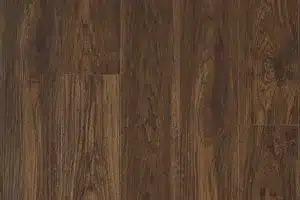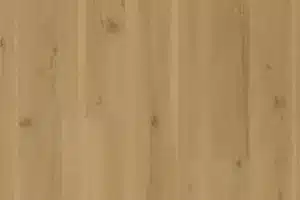Welcome to the captivating world of hardwood flooring! As a seasoned expert in the flooring industry, I’m here to take you on a journey through the diverse and enchanting array of wood types used in crafting the finest hardwood floors. Whether you’re renovating your home or considering an upgrade, understanding the characteristics of different hardwood species will help you make an informed decision that suits your aesthetics, lifestyle, and budget.
Hardwood flooring is renowned for its timeless appeal, durability, and ability to add warmth and elegance to any space. Each type of wood has its own unique characteristics, making it essential to explore your options before making a choice. Let’s delve into the many types of wood that contribute to the magnificent world of hardwood flooring.
 Oak: The Ever-Popular Classic
Oak: The Ever-Popular Classic
Oak hardwood is the quintessential choice for many homeowners. With its exceptional durability and natural beauty, oak flooring comes in two primary varieties: red oak and white oak. Red oak offers a reddish-pink hue with pronounced grain patterns, while white oak boasts a subtler, grayish tone with a more intricate grain.
Oak flooring is prized for its strength and versatility, making it suitable for high-traffic areas like living rooms, hallways, and kitchens. Its timeless appeal ensures that oak flooring will always remain in style.
- Maple: Sleek and Elegant
Maple is known for its fine grain patterns, creamy white appearance, and sleek, contemporary look. While maple is slightly less durable than oak, it is an excellent choice for bedrooms, dining rooms, and areas with lower foot traffic. The light color of maple flooring can brighten up any space and make it appear more spacious.
- Cherry: Rich and Luxurious
Cherry hardwood flooring exudes luxury and sophistication with its rich, reddish-brown color that deepens over time. This wood type develops a beautiful patina, making it an ideal choice for formal living rooms and dining areas. Keep in mind that cherry is a relatively soft wood, so it may show wear and tear more quickly in high-traffic areas.
- Walnut: A Timeless Elegance
Walnut is revered for its deep, chocolate-brown hues and striking grain patterns. This hardwood species is a statement piece in any room and is often used in upscale interiors. While walnut is not as hard as oak, it offers a unique visual appeal that cannot be replicated easily. It’s an excellent choice for a luxurious and inviting atmosphere in bedrooms and home offices.
- Hickory: Rugged and Resilient
Hickory is the go-to choice for those who value durability above all else. Its exceptional hardness and resistance to wear make it suitable for high-traffic areas like kitchens and entryways. Hickory’s color variation, ranging from pale white to dark brown, adds a rustic charm to any space. Its strong grain patterns give it a distinctive appearance.

- Ash: A Light and Durable Option
Ash is an underappreciated gem in the world of hardwood flooring. With a pale yellow hue and straight grain, it lends a sense of lightness and warmth to rooms. Ash is highly durable, making it an excellent choice for busy households. Its neutral appearance allows for easy pairing with various design styles.
- Mahogany: Exotic Beauty
If you’re seeking exotic hardwood flooring, mahogany is a top contender. Its deep reddish-brown color and fine grain patterns create an air of opulence. Mahogany is often used in luxury homes and upscale settings, such as formal dining rooms and libraries. It’s important to note that mahogany can be quite expensive, but its beauty is unmatched.
- Birch: Budget-Friendly Elegance
Birch is a cost-effective alternative to some of the pricier hardwoods. It features a light, golden-yellow hue with subtle grain patterns. While not as durable as some other hardwoods, birch is an excellent choice for bedrooms and low-traffic areas. Its affordability makes it an attractive option for budget-conscious homeowners.
- Brazilian Cherry: Exotic Hardwood Elegance
Brazilian cherry, also known as Jatoba, is a striking exotic hardwood renowned for its deep reddish-brown color and pronounced grain. It adds a touch of luxury to any space and is exceptionally durable. Brazilian cherry’s exquisite appearance is ideal for upscale homes and rooms where you want to make a statement.
- Tigerwood: A Bold and Unique Choice
Tigerwood lives up to its name with its distinctive orange-brown color and dark, irregular stripes. This exotic hardwood is a conversation starter, making it perfect for homeowners who want to make a bold statement. Tigerwood’s hardness and unique appearance make it suitable for living rooms and entryways.
- Cork: Sustainable and Comfortable
While not a traditional hardwood, cork is an eco-friendly flooring option that offers a soft and comfortable feel underfoot. Cork’s natural patterns and colors give it a warm and inviting appearance. It’s a great choice for bedrooms, kitchens, and other areas where comfort is a priority.
- Bamboo: Strength and Sustainability
Bamboo is a rapidly renewable resource that has gained popularity for its strength and sustainability. It comes in a variety of colors, including natural, carbonized, and stained options. Bamboo flooring is suitable for most areas of the home, but be sure to check its hardness rating, as it can vary depending on the manufacturing process.
Conclusion
In the world of hardwood flooring, there’s a wood type to suit every taste, budget, and lifestyle. Whether you’re drawn to the timeless elegance of oak, the luxurious appeal of cherry, or the exotic beauty of mahogany, each wood species has its own unique charm.
When selecting hardwood flooring, consider factors such as the room’s purpose, foot traffic, and personal preferences. Consult with experts in the field and explore various samples to make an informed decision that enhances the beauty and functionality of your living space.
Remember that proper maintenance and care are key to preserving the beauty and longevity of your hardwood floors. With the right wood type and regular maintenance, your hardwood flooring will continue to shine for generations to come, adding warmth and value to your home.
Read next: The History of Mohawk Flooring



